
Table of Contents
Have you ever found yourself scrolling through an eBook, your eyes glazing over, the content seemingly impossible to engage with? You’re not alone. In the digital age, where information is abundant and attention spans are short, designing eBooks that captivate and retain readers is both an art and a science. According to a study by Microsoft, since the year 2000, the average attention span has dropped from 12 seconds to 8 seconds
- that’s less than a goldfish! So, how do we create eBooks that not only survive but thrive in this fast-paced, distraction-filled world? That’s exactly what we’re going to explore in this article.
Agree: You might be thinking, ‘But I’ve seen beautifully designed eBooks that still bore me to tears.’ Absolutely, great design alone isn’t enough. It’s the marriage of compelling content, intuitive design, and strategic reader engagement that makes an eBook truly unputdownable.
Promise: By the end of this article, you’ll have a comprehensive understanding of how to design eBooks that engage readers from the first page to the last. We’ll delve into the psychology behind reader behavior, explore the science of eBook design, and discuss practical strategies for enhancing reader engagement. Whether you’re a seasoned content marketer, a passionate indie author, or a curious designer, this guide will equip you with the tools you need to create eBooks that people actually want to read.
Preview: So, buckle up as we embark on this exciting journey. We’ll start by exploring the unique challenges and opportunities of eBook design, then dive into the fascinating world of reader psychology. Along the way, we’ll debunk myths, share insider tips, and even provide real-life examples of eBooks that have nailed reader engagement. So, are you ready to transform your eBook from a digital dust collector into a captivating, can’t-put-it-down experience? Let’s get started!
Crafting Engaging eBook Experiences: A Guide to Design and Content Marketing
In the digital age, the eBook has evolved from a mere digital facsimile of its print counterpart to a dynamic, engaging experience that can captivate readers like never before. ‘Crafting Engaging eBook Experiences’ is not just a guide, but a creative journey into the heart of modern publishing. We delve into the art of design, exploring how typography, color, and layout can transform flat text into immersive, interactive narratives. We’ll guide you through the intricacies of responsive design, ensuring your eBook looks stunning on any device, from smartphones to tablets to e-readers. But design is just the canvas. The real magic lies in the content. We’ll explore how to create compelling, marketing-worthy content that doesn’t just inform, but engages, entertains, and inspires. From leveraging multimedia elements like audio, video, and animations to creating interactive features like quizzes, polls, and branching narratives, we’ll show you how to make your eBook a true multimedia experience. But we won’t stop at creation. We’ll also guide you through the complex world of content marketing, helping you navigate the digital landscape to reach your target audience. From SEO strategies to social media marketing, from email campaigns to influencer partnerships, we’ll provide you with a comprehensive toolkit to turn your eBook into a bestseller. So, are you ready to craft an eBook experience that’s not just read, but experienced? Let’s dive in!
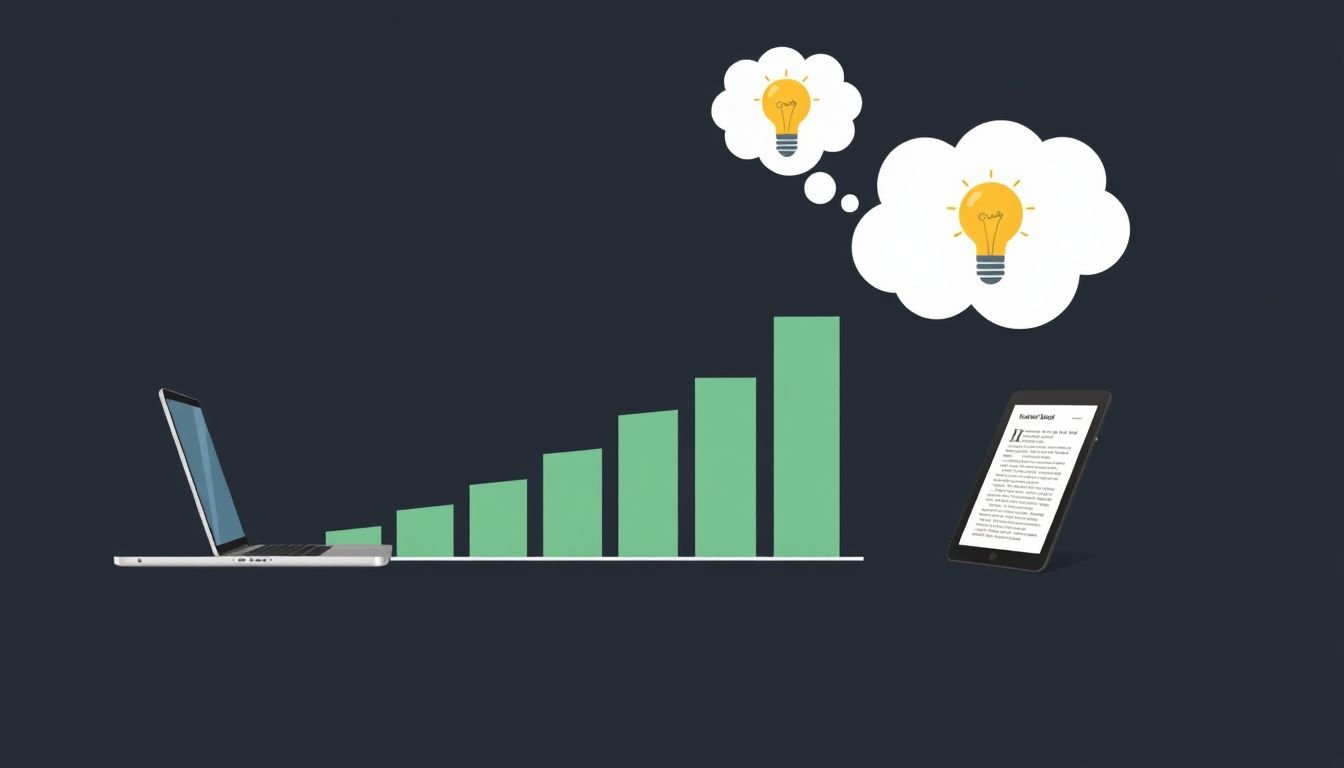
Understanding the eBook Landscape
In the dynamic world of digital publishing, understanding the eBook landscape is akin to navigating a bustling cityscape, where each building represents a unique aspect of this market. Let’s explore this urban metaphor to gain insights into the current eBook market, reader preferences, and the crucial role of design and content marketing.
The eBook Market is the sprawling metropolis, with its towering skyscrapers representing the major players like Amazon, Apple, and Google. These tech giants dominate the market, offering a wide range of eBook platforms and devices. However, the market is not without its quaint, independent bookstores
- the self-publishing platforms such as Smashwords and Draft2Digital, which provide opportunities for authors to reach readers directly.
Reader Preferences are the city’s inhabitants, each with their unique tastes and needs. They can be categorized into different ‘neighborhoods’ based on their preferences: those who prefer the convenience of eReaders, the versatility of tablets, or the accessibility of smartphones. Some readers crave the tactile experience of a physical book, while others appreciate the eco-friendliness and portability of eBooks. Understanding these preferences is key to reaching and engaging readers.
Design plays a pivotal role in capturing attention and driving engagement in this landscape. It’s the city’s architecture, making some buildings stand out while others blend into the background. An eBook’s cover design, typography, and layout can significantly impact a reader’s decision to download or engage with the content. A well-designed eBook not only enhances the reading experience but also reflects the author’s or publisher’s professionalism and commitment to quality.
Content Marketing is the city’s public transportation system, connecting authors and publishers with readers. It involves creating and sharing valuable content to attract and retain readers. This can include book excerpts, author interviews, behind-the-scenes looks, and related blog posts or videos. By providing such content, authors and publishers can build relationships with readers, foster loyalty, and ultimately drive eBook sales. It’s a symbiotic relationship where everyone benefits from the journey.
In conclusion, understanding the eBook landscape requires a holistic approach that encompasses the market’s major players, reader preferences, the importance of design, and the role of content marketing. By navigating this landscape effectively, authors and publishers can reach readers, engage them, and build lasting relationships. After all, every city has its stories, and every eBook has its readers waiting to be captivated.
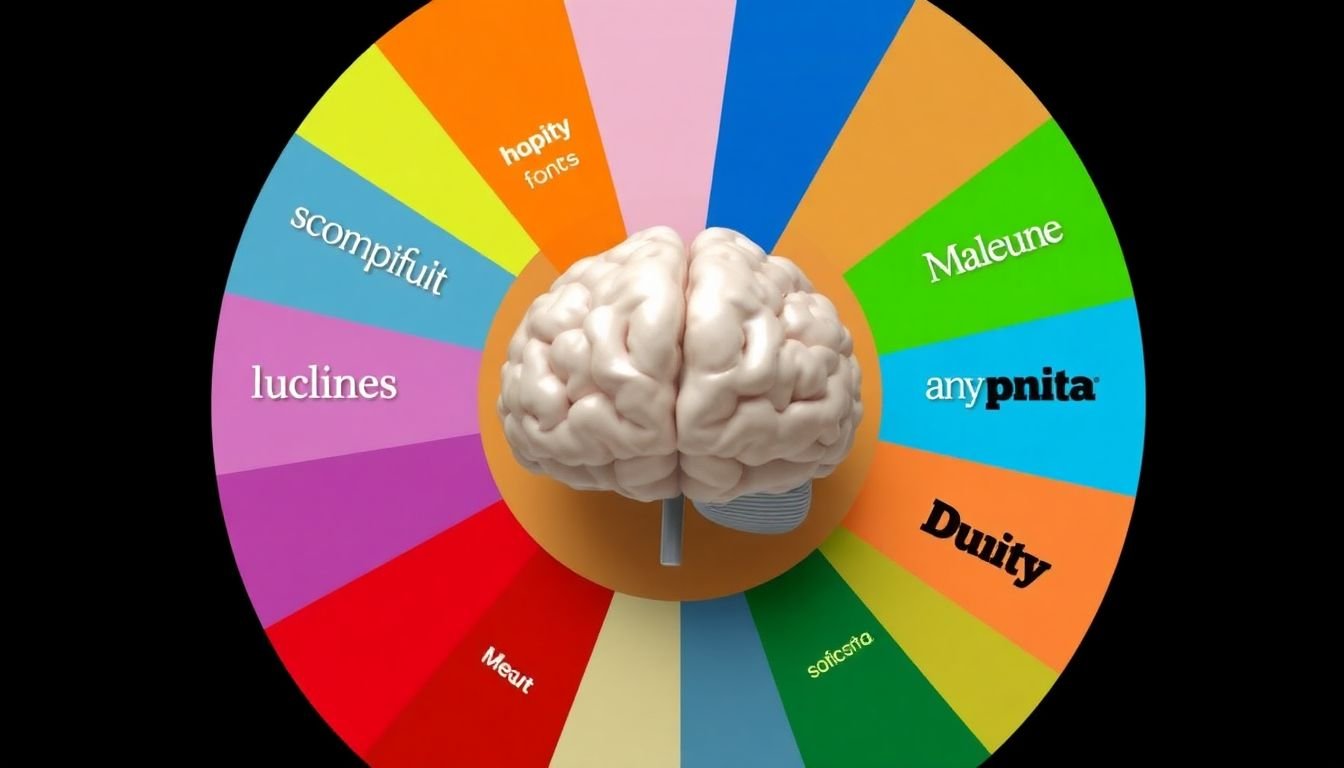
The Psychology of eBook Design
In the digital realm of eBooks, design is not merely about aesthetics; it’s a psychological interplay that significantly influences reader engagement and comprehension. Let’s delve into the fascinating world of eBook design psychology, focusing on color theory, typography, and layout, and their impact on the reader.
The color palette of an eBook is more than just a visual choice; it’s a psychological tool. Colors evoke emotions and set the mood. For instance, cool colors like blue and green can induce calmness, while warm colors like red and orange can stimulate energy and excitement. However, it’s crucial to strike a balance. A study by the University of Washington found that reading comprehension was better with gray text on a white background than with colored text, suggesting that while colors can enhance the reading experience, they shouldn’t distract from the content.
Typography, the art and technique of arranging type, is another critical aspect. Font choice, size, and style can greatly affect readability and comprehension. Serif fonts like Times New Roman are often preferred for long texts as the serifs guide the eye along the line of text, improving reading speed and accuracy. Sans-serif fonts like Arial, on the other hand, are cleaner and more modern, making them ideal for headings and subheadings. Line spacing, justification, and hyphenation also play a role in creating a comfortable reading experience.
Layout is the stage where typography and color theory come together. A well-designed layout guides the reader’s eye through the text, making it easier to navigate and understand. This can be achieved through the use of white space, clear hierarchy in headings and subheadings, and consistent placement of elements like page numbers and chapter titles. However, it’s essential to remember that not all readers are the same. This brings us to the importance of accessibility in eBook design.
Accessibility ensures that the eBook can be enjoyed by everyone, regardless of their physical abilities or reading preferences. This includes features like adjustable font sizes, color contrast options for readers with visual impairments, and text-to-speech functionality for those with reading difficulties. By considering these aspects, eBook designers can create a more inclusive and engaging reading experience.
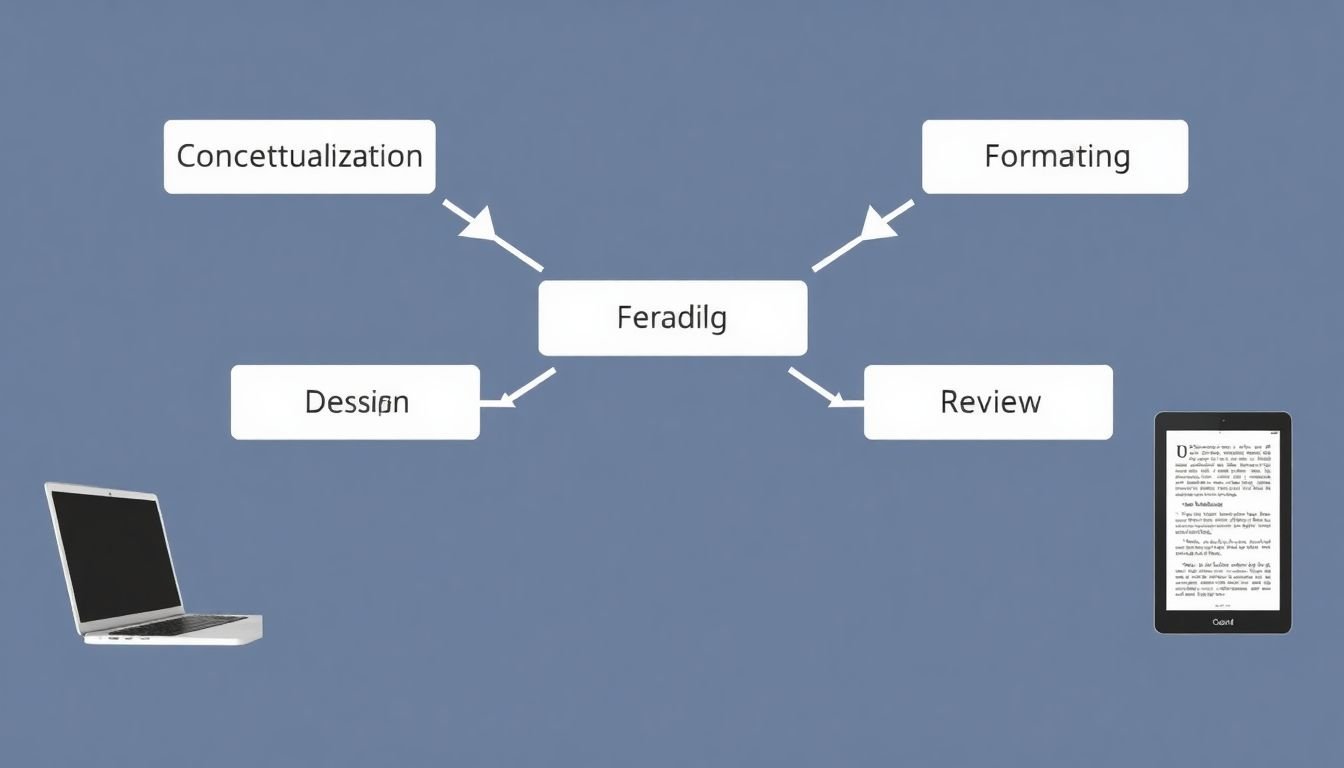
Navigating the eBook Design Process
Embarking on the eBook design journey is an exciting adventure, much like navigating a digital labyrinth filled with endless possibilities. Let’s break down this process into manageable steps, from the initial spark of an idea to the final ‘Publish’ button.
The first port of call is the concept phase. Here, you’ll define your eBook’s purpose, target audience, and unique selling points. Sketch out a basic structure, outlining chapters and sections. Remember, an eBook’s structure should be intuitive and easy to navigate, much like a well-signposted trail.
Once you’ve got your concept nailed down, it’s time to choose your tools. The eBook design landscape is vast, with options ranging from user-friendly platforms like Canva and Adobe InDesign to more complex software like QuarkXPress. Each has its own strengths, so pick one that aligns with your skill level and project requirements.
Now, let’s talk design. The key here is to keep it clean and uncluttered. Use a simple, easy-to-read font, and ensure there’s enough white space to prevent eye strain. Consider using bullet points, headings, and subheadings to break up text and improve readability. Remember, an eBook is a visual medium, so don’t shy away from using images, charts, and graphs to illustrate your points.
But what about interactivity? One of the key advantages of eBooks over their print counterparts is their potential for interactivity. Consider adding hyperlinks, multimedia content, and even quizzes or polls to engage your readers and enhance their learning experience.
However, with great power comes great responsibility. There are pitfalls aplenty in the eBook design process. One common mistake is to cram too much information onto each page, leading to a cluttered, confusing layout. Another is to neglect accessibility features, such as text-to-speech functionality and adjustable font sizes, which can alienate a significant portion of your potential readership.
Finally, once you’ve designed your masterpiece, it’s time to test it. Load it onto various devices and platforms to ensure it looks and functions as intended. Gather feedback from beta readers and make any necessary revisions. Then, and only then, are you ready to hit that ‘Publish’ button and set your eBook free into the world.
So, there you have it
- a step-by-step guide to navigating the eBook design process. It’s a journey filled with challenges, but with the right tools, best practices, and a healthy dose of creativity, you’ll soon be designing eBooks that inform, engage, and inspire.
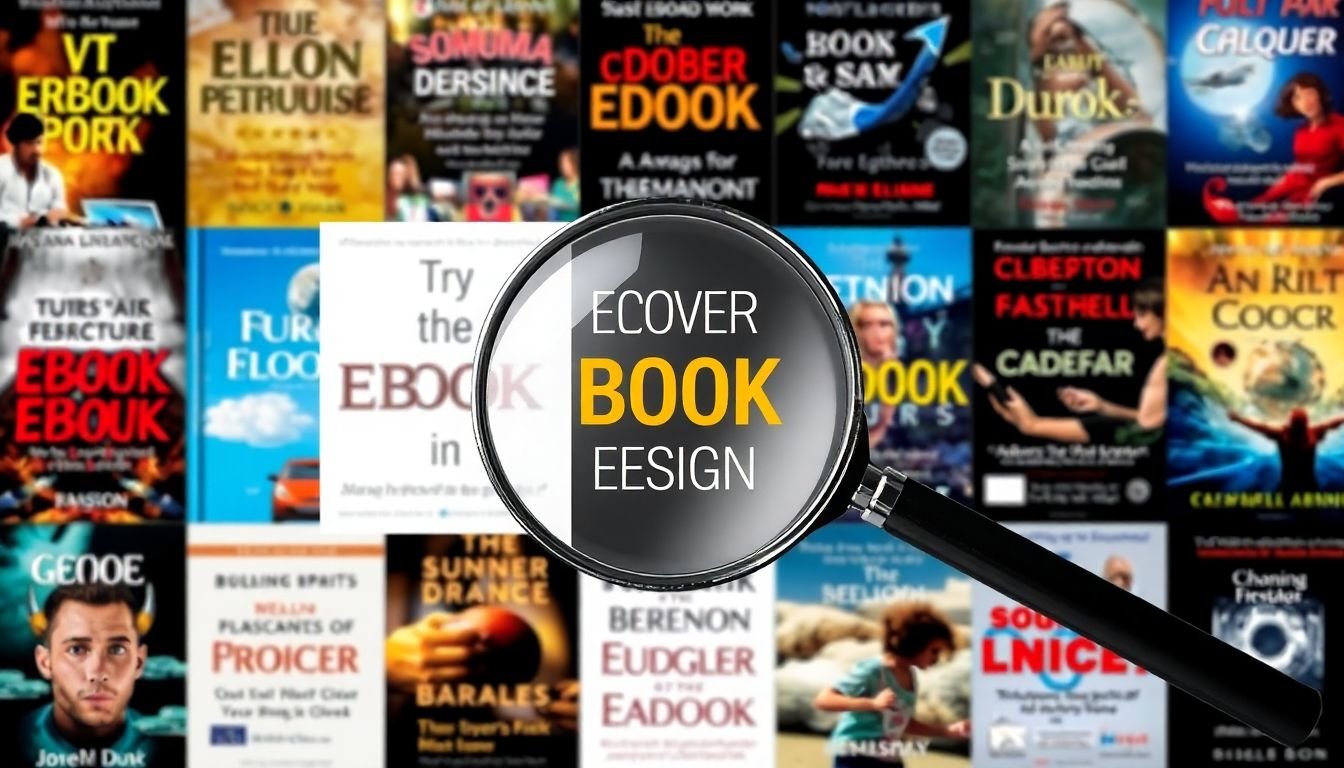
The Art of eBook Covers
In the digital age, where books have transcended the physical realm to inhabit our screens, the art of eBook covers has emerged as a critical factor in capturing attention and driving sales. Much like their print counterparts, eBook covers serve as the first point of contact between a potential reader and the story within, acting as a visual promise of the experience to come. However, the digital landscape presents unique challenges and opportunities for cover design.
The eBook cover, often reduced to a thumbnail on an online store, must be compelling enough to stand out amidst a sea of similar offerings. This has led to a trend of bold, high-contrast designs that can hold their own at small sizes. Minimalism has also gained traction, with clean, simple designs that allow the title and author’s name to take center stage. Meanwhile, the rise of series and subscription-based reading platforms has sparked a trend towards cohesive, recognizable branding across multiple titles.
Best practices in eBook cover design often include using high-resolution images, ensuring the cover is readable at small sizes, and incorporating the title and author’s name in a clear, legible font. The use of color is also crucial, with warm, inviting hues often performing well in fiction genres, while non-fiction titles may benefit from more muted, professional tones. However, these are not hard and fast rules, and the most important thing is to create a cover that accurately represents the content and appeals to the target audience.
Testing different designs is a vital step in the eBook cover creation process. This can involve A/B testing on online platforms, seeking feedback from readers or peers, or even using data-driven tools to predict which design will perform best. By gathering and analyzing this data, authors and publishers can make informed decisions about which cover will best capture the attention of their target audience and drive sales. After all, in the vast, ever-changing landscape of digital literature, a compelling eBook cover can be the difference between lost in the crowd and standing out in the crowd.
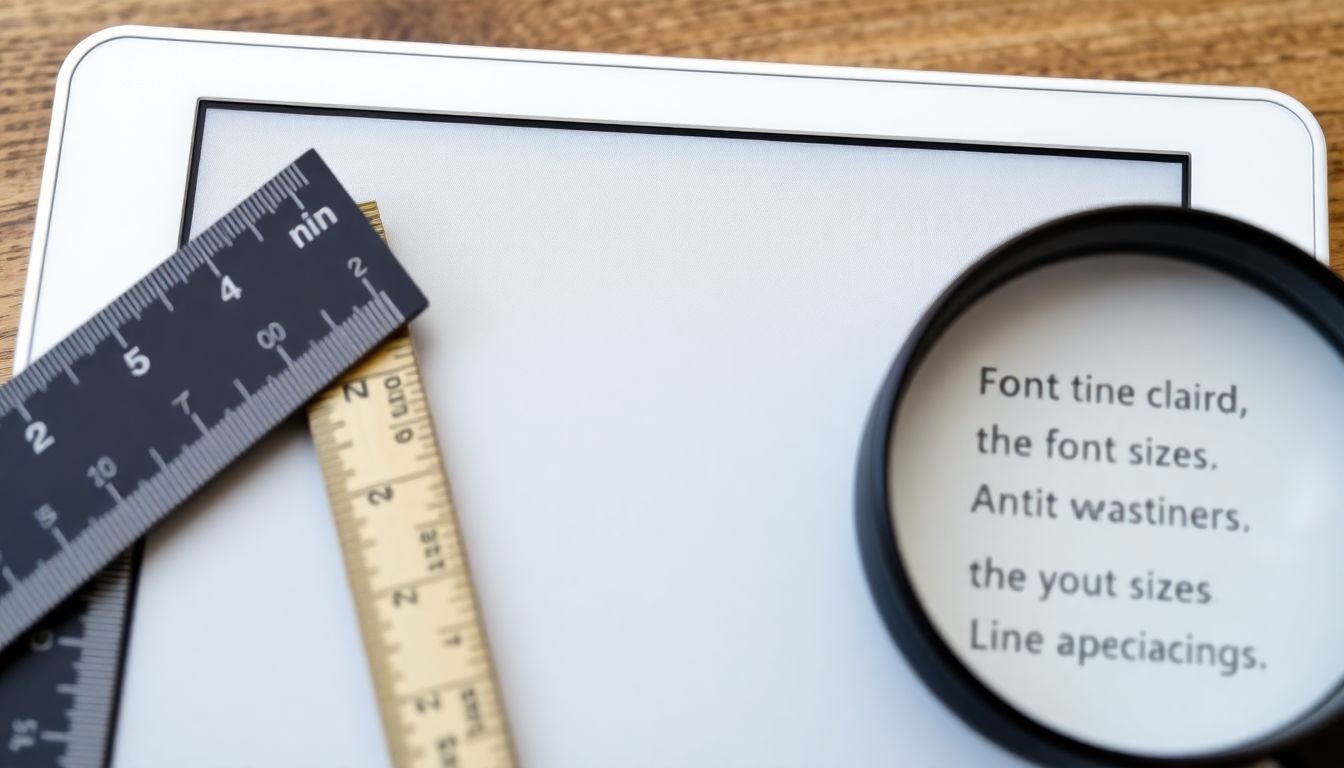
Optimizing eBook Layout for Readability
Optimizing eBook layout for readability is a delicate dance between aesthetics and functionality, ensuring that the content is not just visually appealing, but also comfortable and engaging to read on various digital platforms. The science behind this lies in understanding how our eyes process information and how different screen sizes and resolutions can impact our reading experience.
The first step in this process is selecting the right font size. A font that’s too small can strain the eyes, while one that’s too large can make the text feel cramped. The ideal font size varies from person to person, but a general rule of thumb is to use a font size that’s around 11-12 points for standard eBook text. This size is large enough to be easily readable, yet small enough to fit a good amount of text on the screen.
Line spacing, or leading, is another crucial factor in eBook layout. Adequate line spacing allows the reader’s eyes to easily move from one line to the next without losing their place. A good starting point is to use a line height that’s about 1.5 times the font size. For example, if your font size is 12 points, your line height should be around 18 points.
Margins also play a significant role in readability. They provide a visual break between the text and the edge of the screen, making it easier for the reader’s eyes to focus on the content. The top and bottom margins should be large enough to accommodate the screen’s safe area, while the left and right margins should be wide enough to provide a comfortable reading width. A good starting point is to use margins that are about 10-15% of the screen’s width.
However, these guidelines can vary depending on the screen size and resolution. For instance, smaller screens may require larger font sizes and margins to ensure readability, while high-resolution screens may allow for smaller font sizes and tighter line spacing. It’s also important to consider the aspect ratio of the screen, as this can affect the amount of text that’s visible at any given time.
To accommodate these differences, many eBook platforms offer adjustable settings that allow readers to customize the layout to their preferences. As a designer, it’s important to ensure that your eBook layout is flexible enough to adapt to these changes without compromising readability. This may involve using responsive design techniques or providing multiple layout options for readers to choose from.
In conclusion, optimizing eBook layout for readability is a complex task that involves balancing a variety of factors. By understanding the science behind readable layouts and considering the impact of different screen sizes and resolutions, we can create eBooks that are not just visually appealing, but also comfortable and engaging to read.

Interactive and Enhanced eBooks
In the digital age, eBooks have evolved far beyond their static, text-only predecessors. Interactive and enhanced eBooks are at the forefront of this revolution, offering a rich, immersive reading experience that engages multiple senses and encourages active participation. At their core, these eBooks incorporate multimedia content, such as images, videos, and audio recordings, to illustrate and enhance the narrative. Hyperlinks, another powerful feature, allow readers to delve deeper into topics, exploring related content with just a tap or click. This interactivity fosters a more dynamic and personalized reading experience.
The potential of interactive and enhanced eBooks is vast. Imagine an eBook about space that, with a simple swipe, transforms into a 3D model of the solar system, allowing readers to rotate and explore it. Or consider a language learning eBook that includes audio recordings of native speakers, providing an authentic listening experience. The possibilities are as varied as the stories and subjects they represent.
However, with great power comes great responsibility. The balance between engagement and distraction is a delicate one. Too much interactivity can pull the reader out of the story, disrupting the flow and enjoyment of the text. Therefore, it’s crucial for creators to use these features judiciously, ensuring they enhance the reading experience without overwhelming it. This balance can be achieved through thoughtful design and a deep understanding of the story and its intended audience.
In conclusion, interactive and enhanced eBooks represent a significant leap forward in digital literature. They offer a more engaging, immersive, and personalized reading experience. By harnessing the power of multimedia content, hyperlinks, and interactive elements, these eBooks have the potential to revolutionize the way we read and learn. The key lies in striking the right balance between engagement and distraction, creating an experience that enriches rather than disrupts the reading journey.

Content Marketing Strategies for eBooks
In the digital age, promoting an eBook is as much about marketing as it is about writing. Content marketing strategies have emerged as powerful tools to reach a global audience and drive sales. Let’s delve into some of these strategies, starting with the ubiquitous social media platforms.
Social media marketing is a dynamic and cost-effective way to engage with readers. Platforms like Twitter, Facebook, and Instagram allow authors to connect directly with their audience, share snippets of their work, and build a community around their brand. Hashtags like #amwriting, #writerslife, and #eBooks can help increase visibility. Regularly posting engaging content, such as writing tips, behind-the-scenes glimpses, or character profiles, can keep your audience hooked.
Email marketing, another potent strategy, enables authors to nurture relationships with readers over time. By building an email list, authors can send personalized newsletters, updates on new releases, and exclusive content. This intimate communication channel can significantly boost book sales and foster reader loyalty.
Influencer partnerships can also amplify an eBook’s reach. Collaborating with influencers in the literary world, such as book bloggers or popular Goodreads reviewers, can expose your work to a wider audience. Influencers can provide honest reviews, host giveaways, or simply share your book on their platforms. Remember, the key to successful influencer marketing is authenticity – choose influencers whose values align with yours and whose audience is likely to appreciate your book.
Lastly, building an author brand is not just important, it’s imperative. Your brand is the sum of your personality, your writing style, and your values. It’s what makes you unique and helps readers connect with you on a personal level. A strong author brand can transcend individual books, creating a loyal fan base that eagerly awaits each new release. It’s the foundation upon which all your marketing efforts rest. So, whether you’re crafting a witty tweet, drafting an email newsletter, or collaborating with an influencer, always keep your brand at the forefront. After all, in the vast digital landscape, it’s your brand that makes you stand out.
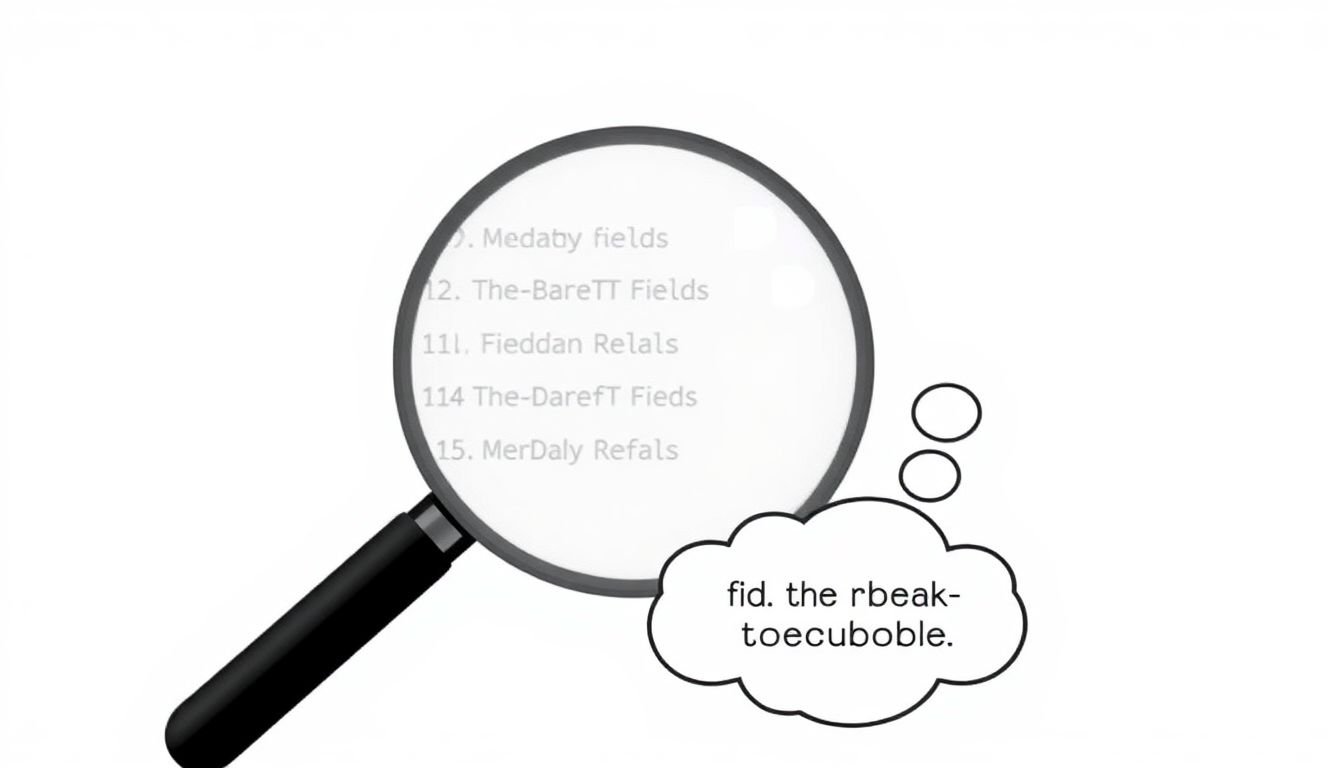
Leveraging Metadata for eBook Discoverability
In the vast digital library of the internet, finding the perfect eBook can often feel like searching for a needle in a haystack. This is where metadata, the structured information that describes, explains, locates, or otherwise makes it easier to retrieve, use, or manage an information resource, steps in to play a pivotal role. Metadata is the unsung hero of eBook discoverability, acting as the silent salesperson that whispers ‘Pick me!’ to potential readers.
Imagine you’re in a bustling bookstore, but instead of physical books, you’re surrounded by digital ones. You wouldn’t just wander aimlessly, would you? No, you’d look for signs, categories, recommendations
- metadata in this case. The same principle applies online. Readers use keywords, categories, and author names to navigate the digital shelves.
Optimizing metadata is thus a critical step in ensuring your eBook doesn’t get lost in the crowd. Let’s delve into some best practices:
- Keywords: These are the breadcrumbs that lead readers to your eBook. They should be relevant, specific, and reflective of your book’s content. Use a mix of broad and niche keywords to cast a wide net. For instance, if your eBook is about ‘sustainable farming’, consider keywords like ‘agriculture’, ‘eco-friendly farming’, ‘organic farming’, and ‘sustainable agriculture’.
- Categories: Amazon and other platforms offer a plethora of categories. Choose the most relevant ones to help readers find your book. Don’t be afraid to use sub-categories if they exist. For example, instead of just ‘Fiction’, consider ‘Fiction > Mystery > Thriller’.
- Author Name: This might seem obvious, but it’s crucial. Ensure your name is consistent across all platforms. If you’re using a pen name, make sure it’s clearly stated and consistently used.
Remember, metadata is not a set-it-and-forget-it task. It’s an ongoing process that should be reviewed and updated regularly to ensure it remains relevant and effective. After all, you want your eBook to be the shining star on the digital bookshelf, not the hidden gem gathering dust in the corner.

The Future of eBook Design and Content Marketing
In the dynamic landscape of digital publishing, the future of eBook design and content marketing is not just about turning pages, but about creating immersive, interactive, and personalized experiences. The advent of voice assistants like Amazon’s Alexa and Google Home is transforming how we engage with content. Imagine asking your voice assistant to read you the latest bestseller, or having it summarize key points of a non-fiction eBook. This hands-free, eyes-free experience is set to become increasingly popular, making it crucial for authors and publishers to optimize their eBooks for voice-activated devices.
The integration of augmented reality (AR) is another emerging trend that promises to revolutionize eBook design. AR can bring stories to life by overlaying digital elements onto the physical world. For instance, a history eBook could use AR to display historical artifacts or scenes right before your eyes. To stay ahead, publishers should start experimenting with AR, perhaps by partnering with tech companies or investing in AR-focused design teams.
Artificial Intelligence (AI) is also making significant inroads into content marketing. AI-driven personalization can analyze reader behavior to provide tailored recommendations, making each reader’s eBook experience unique. Moreover, AI can assist in content creation, helping authors generate outlines, plot points, or even entire passages. However, it’s essential to strike a balance between leveraging AI’s capabilities and maintaining the human touch that makes books so compelling.
To stay ahead of the curve, authors and publishers should consider the following steps:
- Invest in user experience (UX) design to create intuitive, engaging eBook interfaces.
- Explore voice-activated storytelling and ensure their eBooks are compatible with voice assistants.
- Experiment with AR to enhance eBook content and engage readers in novel ways.
- Leverage AI for personalization and content creation, but always prioritize human creativity and storytelling.
By embracing these trends and continually innovating, authors and publishers can shape the future of eBook design and content marketing, creating experiences that are not just readable, but also interactive, immersive, and personal.
FAQ
What are the key elements of effective eBook design?
How can I make my eBook more engaging for readers?
What role does content marketing play in promoting my eBook?
How can I optimize my eBook for different devices and screen sizes?
What are some best practices for using color in eBook design?
How can I make my eBook’s table of contents more useful?
What are some common eBook design mistakes to avoid?
- Using small, hard-to-read fonts.
- Overusing special effects or animations that can be distracting or slow down loading times.
- Ignoring accessibility guidelines, such as not using color as the only means of conveying information.
- Not optimizing images, leading to slow loading times or poor quality on different devices.
- Overlooking the importance of testing on various devices and screen sizes.